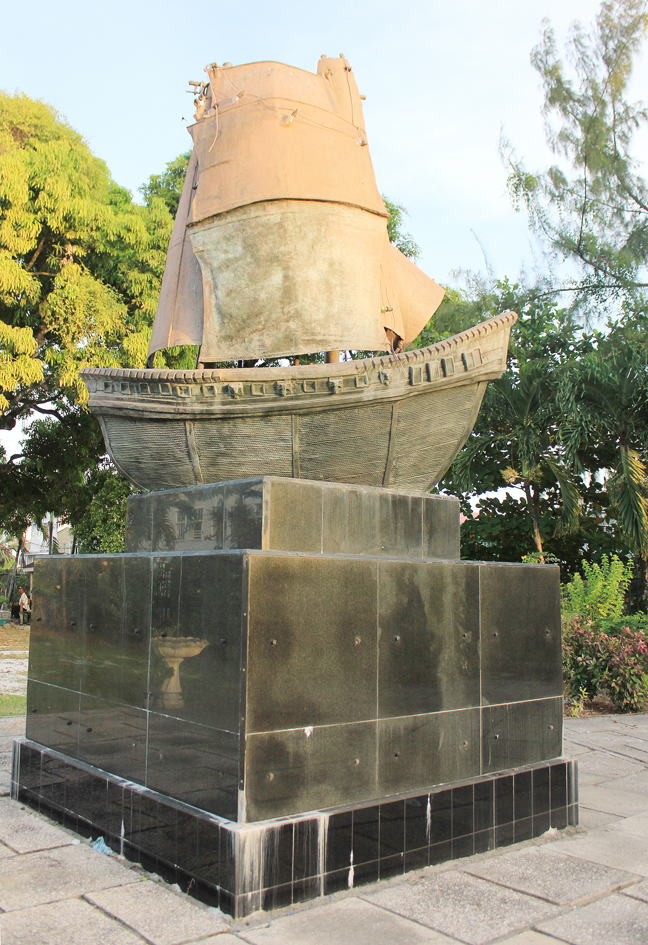By Basdeo Mangru
(Basdeo Mangru received his doctorate in History from the University of London. He is currently Associate Professor of History at York College, City University of New York.)
For a considerable time studies on the Indian diaspora in the Caribbean have been overshadowed by works focusing on the trans-Atlantic Slave Trade and the brutality meted out to slaves on the sugar plantation. Even today historical works on the Caribbean tend to portray the region as predominantly Black, although Indians form a sizable percentage of the English-speaking Caribbean. It was only in 1988, during the 150th anniversary of their presence, that scholarly attention was given to these enterprising people. The academic conferences held in Georgetown, Toronto and New York City produced research papers on a wide variety of issues.
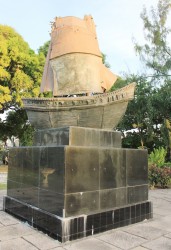
Within this 80-year period roughly 238,979 Indians landed in Guyana (143,900 in Trinidad and 36,412 in Jamaica) from the ports of Calcutta and Madras, of which 65,538 were repatriated. By 1917 Indians comprised 42% of the Guyanese population (today around 43% according to the 2001 census). It is estimated that today they form roughly 20% of the English-speaking Caribbean.
Search for labour force
The importation of Indian indentured workers into post-emancipation British Guiana was part of a continuing search by the sugar planters for a labour force that was tractable, disciplined and accustomed to plantation agriculture under harsh tropical conditions. They perceived immigrant labour as a means of restoring the control they had exercised under the iniquitous slave system as well as enabling them to keep plantation wages down and reduce operational costs. Their attempt to introduce black labour from the overpopulated West Indian islands, West Africa and Southern United States, and white labour from Europe and the Portuguese Atlantic islands, had limited success. It was India with its teeming millions in heavily congested areas which satisfied their needs, and the planters never stopped reiterating the importance of Indian labor to resuscitate the sugar industry and prevent an impending ruin.
In January 1836, John Gladstone, father of William Ewart Gladstone and owner of plantations Vreed-en-Hoop and Vreed-en-Stein, wrote to the Calcutta firm of Messrs Gillanders, Arbuthnot and Company enquiring whether the firm could supply 100 “young, active, able-bodied” labourers on contracts for his estates. The exporters replied that they did not envisage any recruiting problems, “the natives being perfectly ignorant of the place they agree to go to, or the length of the voyage they are undertaking.” This reply virtually set the stage for the deceit, fraud, coercion and kidnapping which permeated the whole recruiting system.
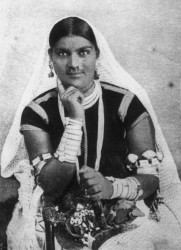
After some correspondence, two sailing ships ‒ the Whitby and the Hesperus ‒ landed in British Guiana on May 5, 1838 with 396 Indians of whom only 22 were women. This shortage of women was to continue throughout indenture with disastrous social consequences in the Indian community. Inter alia, it produced unstable marital relations and an alarming incidence of Indian wife murders in nearly all the recipient colonies. The revelation that Indian women were leading immoral lives in the sugar colonies produced bitter resentment in India and galvanized articulate Indian nationalists into a massive anti-indenture campaign which paralleled the Anti-Slavery movement a hundred years earlier.
Recruitment
Despite social conservatism, caste prejudices and the traditional non-migratory nature of the Indian populace, villagers left their Matribhumi (Motherland) for a variety of reasons. Among these were the socio-economic plight of landless labourers, rackrenting by landlords, rural indebtedness, exploitation by Banias (moneylenders) and the loss of a traditional livelihood due to the importation of cheap manufactured goods from Britain. Recurrent famines in North India were another significant factor in colonial emigration. Famines often broke the morale of villagers and produced a state of complete desperation. Indeed, there was a strong correlation between economic distress and high migration and a good harvest and recruiting difficulties. The Sepoy Mutiny of 1857 also gave a great fillip to colonial emigration as the total number of emigrants shipped from Calcutta (Kolkata) between 1857/1859 jumped from 31,184 in 1854/56 to 88,895 or an increase of some 185 per cent.
Indian workers were drawn largely from North India with smaller batches coming from the Tamil and Telinga districts in the Madras (Chennai) Presidency. Hardly any emigrant was shipped to the West Indies from the port of Bombay (Mumbai) as the government deprecated emigration to distant colonies. In North India the main recruiting areas were the North-Western Provinces and Oudh (contemporary Uttar Pradesh), Bihar and Bengal. Within this vast area the principal recruiting districts were Allahabad, Ghazipur, Kanpur, Azamgarh, Basti, Benares, Faizabad, Gorakhpur, Shahabad, Patna, Gaya, Bhagalpur and the 24-Parganas. From the 1890s to the end of indenture, Basti was the single largest exporter of Indian labour overseas. In South India the main recruiting districts were Madras, Madura, Ganjam and Vizagapatam. For the first twenty years of colonial emigration significant numbers comprised ‘Hill Coolies’ from the Chota Nagpur plateau about two to three hundred miles from Calcutta.
Indian villagers were recruited by professional recruiters who were largely assisted by unlicensed subordinates called arkatis in North India and petty maistris in South India. They operated just outside a town or near wells, railway stations, bazaars, melas, bridges and places of worship. On approaching an intended victim who most probably was without work and penniless, the wily recruiter unfurled in exaggerated terms their prospects abroad. A ‘Notice to intending emigrants to Demerara or British Guiana’ promised them light work, good wages for certain types of work and employment for their children. The ‘Notice’ continued: “The climate of Demerara is better adapted for the Indian cooly than that of his native country. It has not the extreme heat of India, nor is so cold. The country abounds with pure water, and fruits and tropical vegetables flourish to a degree almost unknown elsewhere. No interference is allowed with the religion of the emigrants, and both Hindoos and Mahomedans are protected in the free exercise of their respective creeds.”
Depot
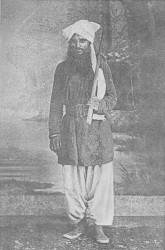
Having been recruited, the emigrant was initially lodged in a sub-depot where he was clothed and fed. Within days he was taken to the District Magistrate who tried to ascertain whether the emigrant was leaving India voluntarily and with full knowledge of his contractual obligations. He was then given an emigration certificate which contained the following particulars:- name, date of birth, age, caste, next of kin, height, village, bodily marks, etc. From upper India, the emigrant was transported by rail to the main depot at Garden Reach, Calcutta, where he was kept under medical supervision until embarkation.
In the whole emigration process, Calcutta, the capital of British India during imperial rule until 1911 when it was moved to New Delhi, played a pivotal role. From the onset of the indentured emigration system to its termination, all colonial emigrants from North India were shipped from the port of Calcutta. By the 1880s the three or four colonial depots utilized by the ten emigration agencies were, with the exception of the Mauritius Depot at Bhowanipur, located at Garden Reach, about three miles from Calcutta. The concentration of industries in and around Calcutta and the 24-Parganas, the industrial suburb of Calcutta, exerted annually, especially during the slack period, a magnetic pull on both skilled and unskilled labour from Bihar and the North-Western Provinces and Oudh. These migrant, unskilled workers, who travelled sometimes three to four hundred miles by bullock carts, often found employment in the Calcutta jute mills, in construction, in the milk trade or as boatmen, domestics and grass cutters. Those who failed to find employment were entrapped by the euphoric promises of glib recruiters. On the other hand, the high wages earned in the jute industry and on the coal dockyards provided a strong inducement to up-country recruits, coming to Calcutta by train at the Agency’s expense, to change their minds about emigrating overseas and secretly deserted.
Concomitantly, at the Calcutta central depots colonial recruits were seasoned for the vicissitudes of the long, monotonous trans-Atlantic voyage. At the depot, they were examined by the depot medical officer and all suspected cases of infectious diseases were promptly separated and all clothing destroyed. Serious cases were referred to an outside institution. Those considered medically fit were vaccinated or revaccinated and the rejects returned by rail to the district of recruitment. During the period of depot detention, which ranged from a few days to sometimes six months, the emigrants were under constant medical care. Shortly before embarkation, emigrants were issued with new clothing and given a final examination by the Government Medical Inspector of Emigrants, the Ship’s Surgeon and the Resident Depot Medical Officer.
From the 1890s to the dismantling of the emigration system in March 1917 and the permanent closure of the sole Calcutta depot, there were constant improvements in the physical and sanitary conditions of the several depots. When the depots were connected to the Calcutta water-supply mains, pure water for drinking and culinary purposes was obtained from taps. Consequently cholera almost disappeared from the depot.
On arrival in British Guiana, indentured Indians quickly came under the rigid discipline of the plantation system. The plantation is often described as “a total institution where a large number of individuals, cut off from the wider society for a long period of time, together lead an enclosed and formally administered life.” On the plantation, Indians and other groups were controlled largely by the Labour and Vagrancy Laws which, inter alia, subjected them to heavy penal sanctions, circumscribed their movements even during leisure and denied them access to the Immigration Office to air their grievances. These two sets of laws reduced workers to a state of helplessness and dependence akin to slavery. The various disabilities on arrival aggravated their plight.
Strikes
Strikes and demonstrations, assaults on managers and estate subordinates, coupled with such passive resistance as malingering and deliberately doing sloppy work, seemed the only forms of protest through which Indians could give expression to their grievances. The most violent strikes in the indentured period occurred at Devonshire Castle, Essequibo, in 1873, Non Pareil in 1896, Lusignan in 1912, and Plantation Rose Hall in 1913 where 15 Indians were killed including a woman, Gobindai. The many confrontations with a repressive state apparatus seemed to destroy the myth of Indian docility and demonstrated forcibly that Indians were capable of responding appropriately to pressures.
They used the Tadjah celebrations to demonstrate their power in the community. Tadjah devotees in their inebriated state frequently attacked, with their hackia sticks and other lethal weapons, any European or traveller who failed to dismount from his horse or carriage and show reverence to the shrine.
Land purchase
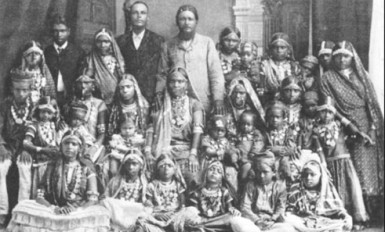
In the mid-1870s an important change, the cessation of re-indenture, occurred affording those who completed their contracts the opportunity to purchase land. As a result several small Indian villages sprang up in the three counties of Essequibo, Demerara and Berbice. The government, too, began experimenting with Indian villages so as to prevent Indians from leaving for India and reduce its liability for providing free return passages and for acclimatizing the newcomers. All these government experiments ‒ Nooten Zuill, Huist ’t Dieren, Helena, Whim, Maria’s Pleasure ‒ did not seem to succeed largely because of the ambivalent attitude of the planters who were not prepared to incur expenditure which would exceed the cost of repatriation. In the villages established by free labourers on their own initiative, rice, coconut, and cattle industries were developed.
Until the 1920s Indians showed very little interest in educating their children. In 1901 it was estimated that 80% of East Indian children of primary school age did not attend school. The condition of life on the estates contributed significantly to the non-education of Indian children as most estates employed children under nine years of age. To the mass of poor Indians, education seemed a luxury whereas young children could be sent to the fields to supplement family income. Many parents who were disposed to sending their children to school strongly objected to the prevailing system which combined Christianity with education. Others who were intent on returning to India saw no intrinsic value in educating their children in English. Thus in 1923 only 29% of East Indian children attended primary school; among the Chinese it was 83%, Blacks or Coloureds 79%, Portuguese 75% and Amerindians 59%.
Political consciousness among Indians was also low under indenture. One of the reasons was their ignorance of the English language which was a prerequisite to any form of political participation. The absence of prominent leaders in the Indian community also rendered politics less worthwhile. One traditional institution, the Panchayat (council of five elders), had the capacity for channelling political activity, but in such an alien environment it did not seem to survive long. In any case, most indentured Indians looked to the Immigration Agent-General, whom they held ‘in loco parentis,’ to represent their grievances. They frequently approached James Crosby, the longest serving Immigration Agent-General in British Guiana, with full confidence that their interests would be adequately protected and their grievances speedily redressed.
Policy change
Since 1845 when colonial emigration became state controlled, the Government of India adopted a policy of benevolent neutrality which was maintained throughout the 19th century. With the growth of nationalism in India, a change of policy occurred when in 1910 the Indian government assumed power to prohibit emigration to any country which failed to give sufficient guarantees about the future treatment of Indians resident there. The assumption of such power followed Mohandas Gandhi’s exposure of the abominable conditions under which Indians laboured in South Africa, and the refusal of the South African government to abandon its discriminatory laws.
But it was Lord Hardinge, Viceroy of India (1910-16), who attacked the ineradicable evils of the system, namely the grave recruiting irregularities, a high mortality and suicide rate on the plantations, “indescribable” sexual immorality in the immigrant camp, and mounting planter prosecutions for minor infractions of the law. Indenture, too, was considered an affront to the national honour of India that must be abolished. At the same time, the Indian government was finding it extremely difficult to defend a system which aroused so much bitterness among articulate Indians. It took a massive anti-indenture campaign largely confined to India, and punctuated by speeches, petitions, pamphlets and propaganda, to ensure its abolition. A subsequent attempt to introduce Indian workers on a colonization scheme did not materialize because of its financial implications and strong opposition in India. By 1920 indenture officially came to an end.
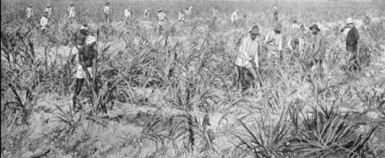
The year 1988 was of great historical significance for it commemorated the 150th anniversary of the arrival of the first batch of East Indians in the Caribbean. It had been a period of tremendous sacrifice and a dogged determination to survive the drudgery and rigorous discipline of plantation life. Indian cultural persistence ensured the continuation of Hinduism and Islam which tended to create a sense of unity and solidarity and prevent the powerful plantation system from reducing them to mere puppets. The Victorian values of thrift and industry enabled them to establish their independence from the estate and to build up their resources. The novelist, George Lamming, succinctly summarized this aspect of their contribution: “They are, perhaps, our only jewels of a true and native thrift and industry. They have taught us by example the value of money; for they respect money as only people with a high sense of communal responsibility can.”
As they observe the 175th anniversary of their arrival in 2013, Indians in the diaspora must seize the opportunity to highlight their economic, political, educational, cultural and scientific achievements so that their manifold contributions could be placed in their proper perspective.
